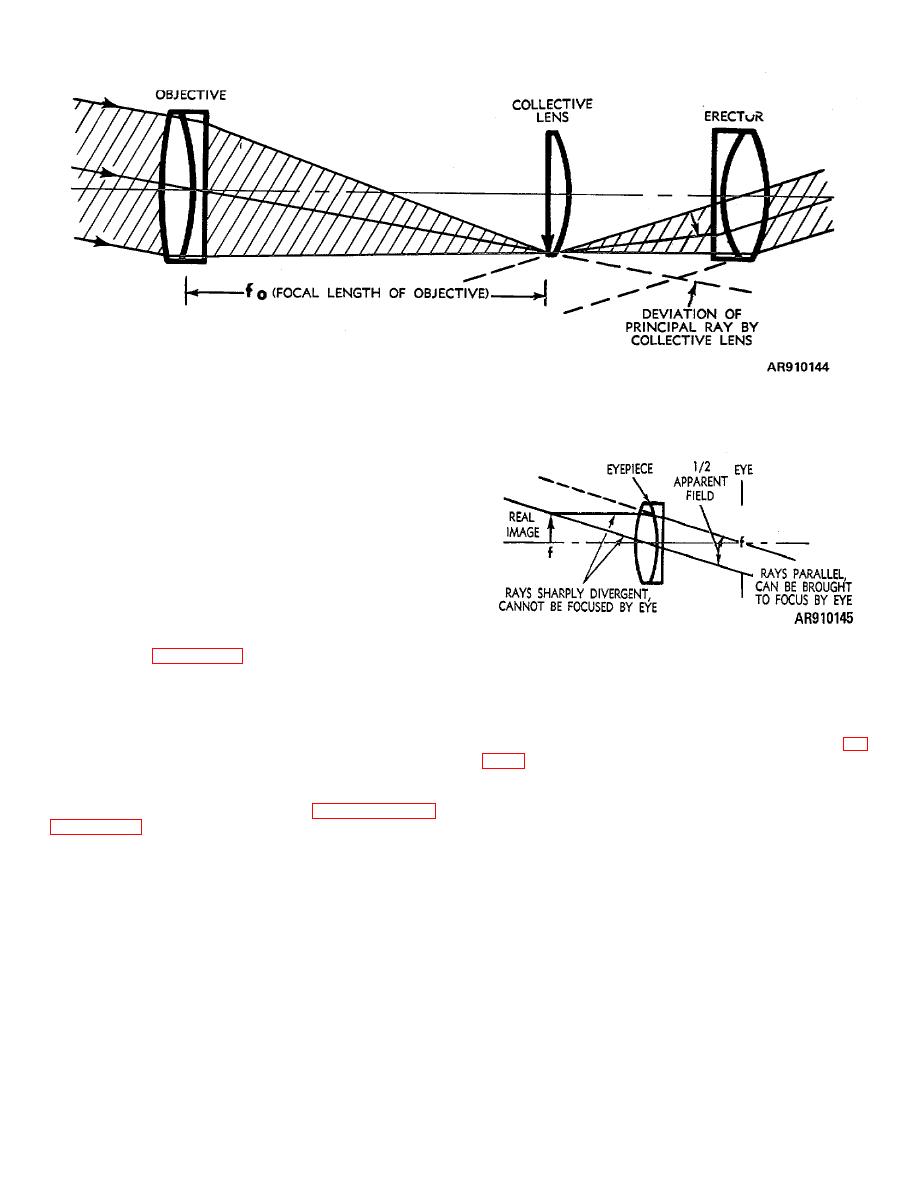 |
|||
|
|
|||
|
Page Title:
Figure 5-16. Function of collective lens. |
|
||
| ||||||||||
|
|
 TM 9-258
Figure 5-16. Function of collective lens.
b. Secondary Functions. This lens also shortens the
eye reflief (distance from eyelens to eye) of the
instrument by shifting the plane of the exit pupil (in which
the eye must be located to view the full field) closer to
the instrument. It is not used, therefore, in rifle scopes or
gunsights where long eye relief is essential to' avoid
injury from the recoil.
5-13.
Functions of Eyepiece or Ocular.
a. General. An eyepiece in its simplest form
may consist of a single lens (simple magnifier) which
presents to the eye an enlarged virtual image of the real
image formed either by the objective or the erectors as
illustrated in figure 5-17. The usual apparent field
Figure 5-17. Function of eyepiece.
provided by an eyepiece is 400 to 500. A wide angle
eyepiece is one fully corrected to the edges and of
b. Function of Elements. In a simple eyepiece
sufficient aperture so that in a system of given eye relief
using two lenses, an eyelens next to the eye provides all
a wide field of up to 75. may be provided. Because
or most of the magnification depending on the location of
magnification is angular, this apparent field limits the true
the filed lens relative to the real image. The field lens (fig
field of the instrument for any certain power. For
example, a 4-power instrument with an eyepiece
magnification but acts as a collective lens providing
providing a 400 apparent field will have a true field of
balanced illumination of the field. Without the field lens
100. This will be discussed fully in paragraphs 5-21
principal rays from the edge of the field would miss the
eyelens and leave the edge of the field dark. With the
field lens in the image plane, however, any dust on its
NOTE
surface lying in the image plane will be in sharp focus.
The power of an eyepiece is inversely
For this reason, unless there is an etched reticle on this
related to its focal length; i.e., high-
surface, the field lens usually is displaced slightly from
power eyepiece is one of short focal
the image plane thus contributing to the magnification.
length. It is thus possible to replace an
Another reason for not placing the field lens in the focal
eyepiece with one of shorter focal length
plane is that this is the position normally occupied by the
and increase the power of the
reticle in those instruments emplying reticles with the
instrument.
reticle pattern etched on glass or a
5-9
|
|
Privacy Statement - Press Release - Copyright Information. - Contact Us |